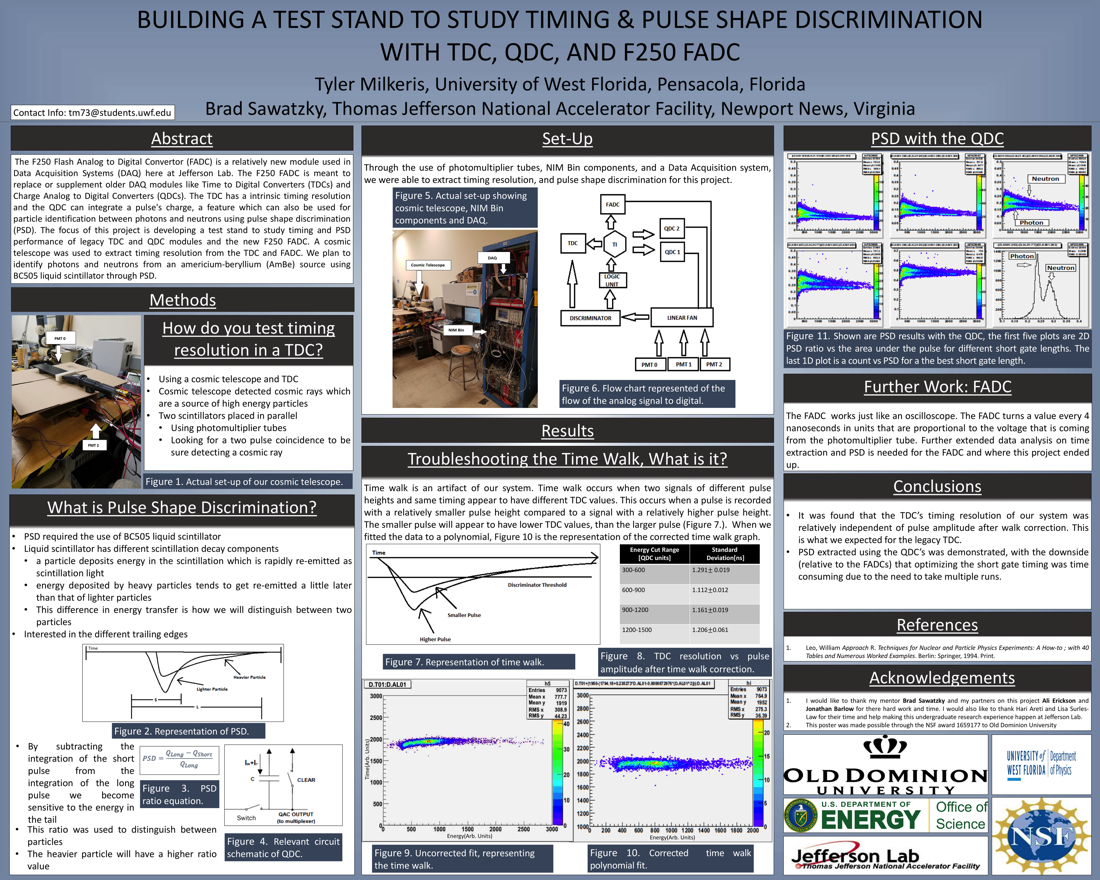Undergraduate Research at Jefferson Lab
Building a Test Stand to Study Timing and Pulse Shape Discrimination with TDC, QDC, and F250 FADC
Student: Tyler Milkeris-Zellar
School: University of West Florida
Mentored By: Brad Sawatzky
The F250 Flash Analog to Digital Convertor (FADC) is a relatively new module used in Data Acquisition Systems (DAQ) here at Jefferson Lab. The F250 FADC is meant to replace or supplement older DAQ modules like Time to Digital Converters (TDCs) and Charge Analog to Digital Converters (QDCs). The TDC has a certain intrinsic timing resolution and the QDC can integrate a pulse's charge, a feature which can also be used for particle identification between photons and neutrons using pulse shape discrimination (PSD). The focus of this project is developing a test stand to study timing and PSD performance of legacy modules TDC and QDC, and the new F250 FADC. A cosmic telescope was used to extract timing resolution from the TDC and FADC. Through PSD with the QDC and FADC, using a BC505 liquid scintillator, we plan to identify photons and neutrons from an americium-beryllium (AmBe) source. It was found that the TDC's timing resolution in the system was better than the FADC. Through PSD, it was found that the FADC allows for flexible data analysis compared to the QDC. The results indicate that the TDC provides a more accurate measurement of timing resolution than the FADC. This improvement allows for a clear distinction of what module to use when wanting precision of measurement in a DAQ for a cosmic ray telescope.

Citation and linking information
For questions about this page, please contact Education Web Administrator.
